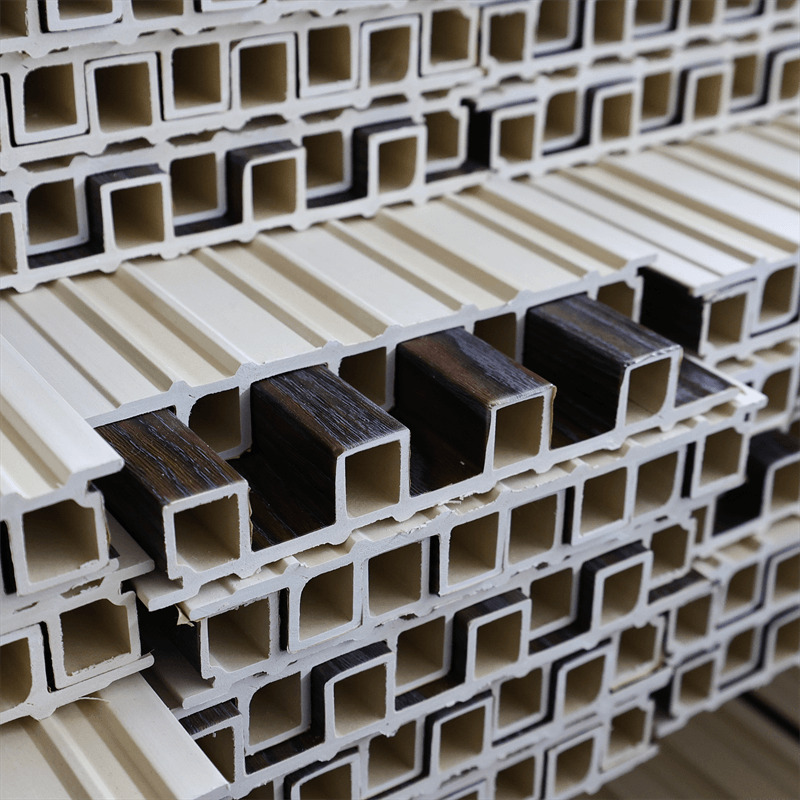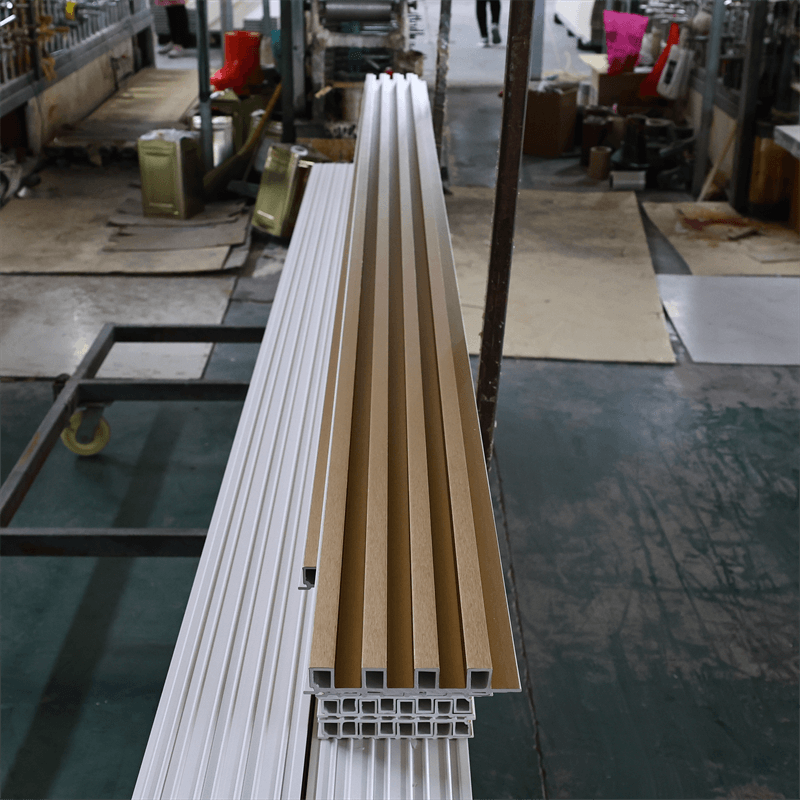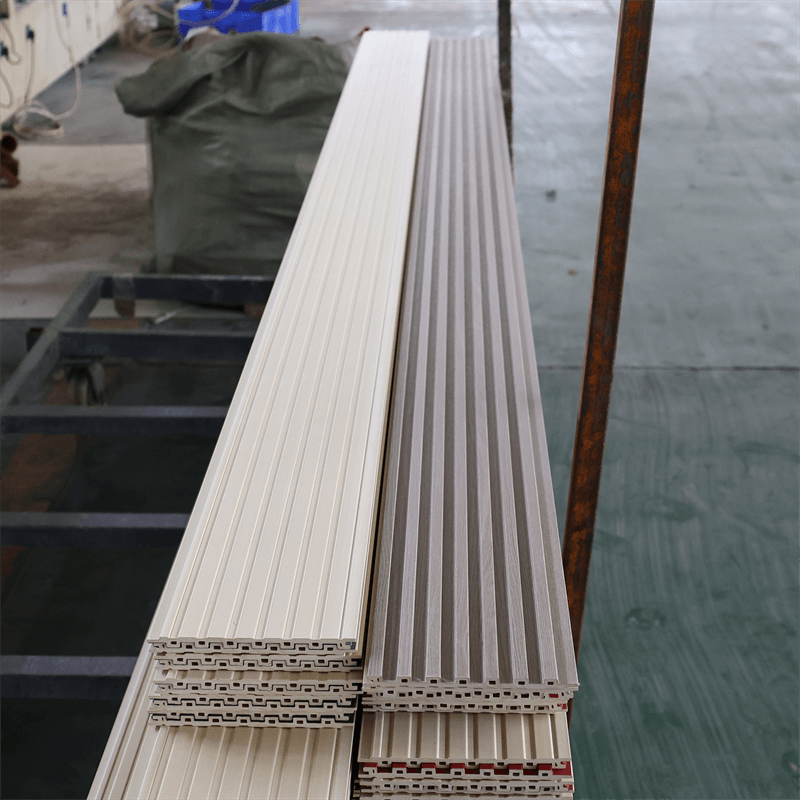In interior design, versatility is a key factor in creating spaces that are visually appealing, functional, and reflective of personal style.
Wood-Plastic Composite (WPC) wall panels have emerged as a versatile material that allows designers and homeowners to transform interior spaces with ease.
This essay explores the design versatility of WPC wall panels and how they can be used to enhance interior aesthetics, create focal points, achieve different architectural styles, and promote creativity in design.

I. Enhancing Interior Aesthetics: Beauty and Elegance
- Natural Wood Look: WPC wall panels offer the visual appeal of natural wood, creating a warm and inviting atmosphere in interior spaces. With a wide range of wood grain patterns and finishes available, designers can achieve the desired aesthetic, from rustic and traditional to modern and contemporary. The natural wood look of WPC panels adds a touch of elegance and sophistication to any interior setting.
- Color Options: Beyond the natural wood look, WPC wall panels come in various colors to suit different design preferences. Whether it’s a bold and vibrant statement or a subtle and muted palette, the color options allow designers to personalize interior spaces and create unique visual experiences. The versatility of colors offered by WPC panels enables designers to match or contrast with other design elements, such as furniture and flooring.
II. Creating Focal Points: Accentuating Design Elements
- Feature Walls: WPC wall panels are an excellent choice for creating eye-catching feature walls within interior spaces. Whether it’s in a living room, bedroom, or commercial setting, a feature wall can serve as a focal point that adds character and visual interest to the overall design. With the versatility of WPC panels, designers can play with different textures, colors, and patterns to create a striking feature wall that sets the tone for the entire space.
- Vertical Applications: WPC panels can be applied vertically to accentuate specific design elements or architectural features. By strategically placing WPC panels on walls, columns, or pillars, designers can create visual impact and draw attention to particular areas of the interior. This versatility allows for the exploration of different design concepts, such as creating visual depth, highlighting artwork, or emphasizing structural elements.
III. Achieving Different Architectural Styles: Versatility in Design Concepts
- Contemporary Design: WPC wall panels are well-suited for contemporary interior designs, with their sleek and clean lines. The smooth and consistent surface of WPC panels complements minimalist aesthetics, providing a seamless backdrop for modern furniture and decor. The design versatility of WPC panels allows for the creation of contemporary spaces that exude sophistication and simplicity.
- Traditional and Rustic Design: WPC wall panels can also be used to achieve traditional or rustic interior designs. With their natural wood look and textured finishes, WPC panels can add warmth and a sense of nostalgia to spaces. The versatility of WPC panels enables designers to create traditional or rustic settings that evoke a cozy and timeless ambiance.
IV. Promoting Creativity in Design: Customization and Flexibility
- Custom Patterns and Cutouts: WPC wall panels can be customized with different patterns and cutouts to add a unique touch to interior spaces. Designers can create intricate designs, geometric patterns, or even incorporate company logos or symbols. This flexibility in customization allows for endless possibilities, promoting creativity and personalization in design.
- Installation Techniques: WPC panels offer flexibility in installation techniques, allowing designers to explore various layouts and configurations. Panels can be installed horizontally, vertically, or in a combination of both, enabling designers to experiment with different design concepts. The ability to mix and match panel orientations and create unique patterns adds a layer of creativity to the design process.
WPC wall panels provide a high level of design versatility, allowing designers and homeowners to transform interior spaces and bring their creative visions to life.
From enhancing aesthetics and creating focal points to achieving different architectural styles and promoting creativity, WPC panels offer endless possibilities for interior design.
The natural wood look, color options, and customization capabilities of WPC panels empower designers to create unique and personalized spaces that reflect individual style and preferences.
By embracing the design versatility of WPC wall panels, interior designers can push the boundaries of creativity, elevate interior aesthetics, and deliver spaces that are visually stunning and functional.
Whether it’s a residential, commercial, or hospitality project, WPC panels offer the flexibility and adaptability needed to achieve outstanding interior designs.
With their ability to transform interior spaces, WPC wall panels have become a preferred choice for those seeking to create captivating and inspiring environments.

In conclusion, the design versatility of WPC wall panels opens up a world of possibilities in interior design.
Their natural wood look, wide range of colors, and customization options allow designers to create spaces that are visually captivating, unique, and reflective of personal style.
Whether it’s enhancing aesthetics, creating focal points, achieving different architectural styles, or promoting creativity, WPC panels provide the flexibility and adaptability needed to transform interior spaces.
By incorporating WPC wall panels into interior design projects, designers can elevate the overall aesthetic appeal of spaces, creating visually stunning environments that leave a lasting impression.
The versatility of WPC panels enables designers to experiment with different textures, patterns, and installation techniques, fostering creativity and pushing the boundaries of design.
Furthermore, the use of WPC panels contributes to sustainable design practices by utilizing recycled materials, reducing waste, and supporting a greener future.
The durability and low maintenance requirements of WPC panels ensure that the beauty and functionality of interior spaces are preserved for years to come.
Whether it’s a contemporary, traditional, or rustic design concept, WPC wall panels offer a versatile solution that can be tailored to meet the specific design goals and preferences of any project.
Their ability to transform interior spaces and create visually striking results has made WPC panels a popular choice among designers, homeowners, and business owners alike.
In the world of interior design, WPC wall panels have proven to be a game-changer, providing endless design possibilities and pushing the boundaries of creativity.
By embracing their design versatility, designers can bring their visions to life, transforming interior spaces into captivating, functional, and personalized environments.

